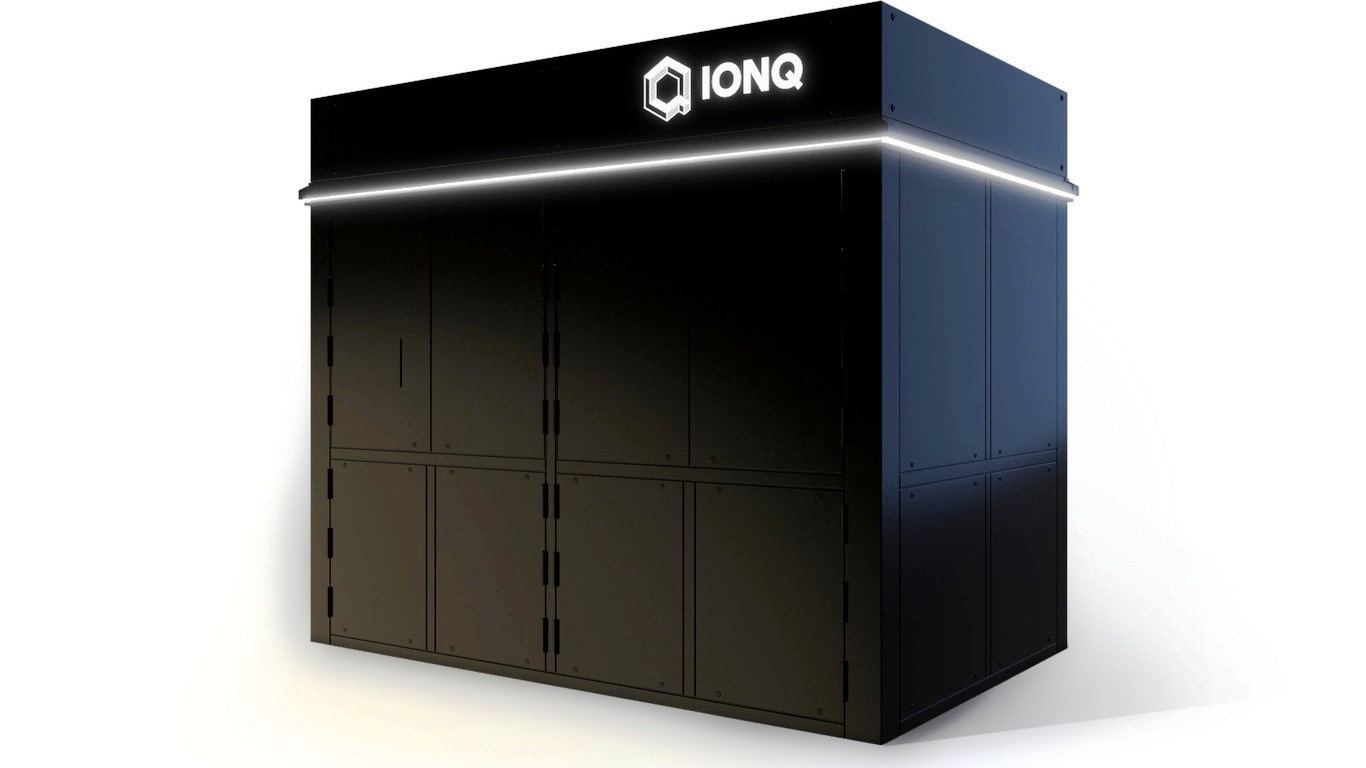Advanced Micro Devices Inc. (NASDAQ: AMD) had a very poor earnings report this past week, and it shows that the company’s turnaround is one that just is not turning. The wins for the Xbox One and PlayStation 4 are now behind, and the rest of the company’s efforts are not delivering the expectations that turnaround investors were betting on in 2013 and 2014.
After AMD shares dropped 10% to $2.58 on Friday, 24/7 Wall St. wanted to evaluate what analysts on Wall Street are forecasting for the company. Some analysts tried to maintain a positive call with muted upside, but other analysts smell blood in the water.
The AMD sell-off in many ways is a win for Intel Corp. (NASDAQ: INTC). Analysts were getting ever more behind Intel after earnings, despite numbers that had been lowered ahead of time. The analyst community just is not behind AMD any longer, and AMD’s loss can be seen as a win for Intel.
If there is any good news here, it is that AMD still did not take out its $2.14 52-week low. It also traded up to $2.58 by the close of Friday, after hitting an intraday low of $2.45. A 10% sell-off is rarely viewed as good, but the stock closed up 5% from that intraday low.
ALSO READ: 4 Tech Stocks Goldman Sachs Wants You to Sell
Here are details from the analyst calls we have tracked on Wall Street. Again, the calls by and large are just far from positive.
Oppenheimer
Oppenheimer’s Rick Schafer maintained an Underperform rating. He cut its “near Street-low estimates” after AMD came up short and lowered guidance. Schafer also pointed out underwhelming personal computer (PC) demand and excess channel inventory compounding share loss to Intel in its core PC and graphics segment. Also, he said:
Despite mix skewing away from lower gross margin gaming in the first quarter, AMD expects gross margin to remain flat quarter over quarter, indicative of PC market uncertainty. Given the significant revenue shortfall and fiscal year trajectory, we have incremental free cash flow and balance sheet concerns as new semi-custom design wins are unlikely to ramp until the second half of 2016. We continue to see little to no earnings power …
Canaccord Genuity
Canaccord Genuity said that soft results and guidance prompted the firm cut its target to $2.00 from $2.50. Now the firm is hoping for more strategic clarity and further cost reductions at AMD’s analyst day. Canaccord analyst Matthew Ramsay said:
Despite a challenging macro environment, we believe AMD’s diversification strategy continues to show gradual progress and could position the company for more defensible long-term sales and even profitability should the cost basis be lowered further or new semi-custom deals produce higher margins.
ALSO READ: 5 Outstanding UBS Quality Growth at Reasonable Price Tech Stock Picks
Merrill Lynch
Merrill Lynch’s Vivek Arya and team maintained an Underperform and price objective of $2.25 on AMD.
Merrill Lynch sees AMD’s new $1 billion wafer supply agreement (take or pay) with GlobalFoundries looking unlikely to be fulfilled, given only $161 million was used in the first quarter and that second quarter sales are likely to decline. AMD does plan to add $100 million of console inventory in the second quarter, but that just pulls forward expected second half inventory builds. The team said:
Ultimately, we believe a strong second half recovery is needed for AMD to fulfill its commitments which looks challenging given competition from Intel & NVIDIA. … While the second half of 2015 is the critical period for AMD, we are increasingly uncertain about 2016 prospects especially around the announced new semi custom wins.
In the past, AMD said sales would ramp in 2016 — which was now clarified to mean the second half of 2016. While console shipments are likely to provide a decent floor in semi-custom business, the average sale price could decline as the console cycle enters its latter stages. … We lower our 2015/16 pro-forma EPS by 41c/47c to -$0.25/$-$0.24. … The high short interest and ongoing semiconductor consolidation wave could limit downside, but we see no fundamental attraction in the stock.
Wells Fargo
Wells Fargo’s David Wong maintained his Outperform rating but lowered the fair value range to $3.00 to $3.50 from the prior range of $3.50 to $4.00.
Wells Fargo used to be one of the more bullish about AMD’s turnaround. Wells Fargo said that AMD’s March quarter sales and June sales guidance are under plan and that AMD’s goal in 2015 is to maintain cash and equivalents in the range of $600 million to $1 billion. This is a change from the prior goal of maintaining the overall cash and equivalents balance at close to $1 billion. The firm’s 2015 EPS estimate was lowered to -$0.58 from a prior -$0.28, and the 2016 EPS estimate was cut to -$0.50 from a prior -$0.08. The lower valuation range is based on 0.5 to 0.6 times the firm’s 2016 revenue per share estimate. Wong said:
Our disappointment in these latest results has prompted us to re-evaluate our investment thesis on AMD. We now think that it is important to emphasize the substantial risks AMD faces given the continuing drop in sales and the ongoing losses the company is reporting. Visibility is poor and we have cut our estimates substantially. Our new model has losses in each quarter through the rest of 2015 and through 2016. Nevertheless, we do believe that AMD has valuable expertise in microprocessor and graphics circuit design from which, in time, it should be able to generate a profit.
We are maintaining our Outperform rating on AMD. AMD announced it is exiting the dense server systems (SeaMicro) business, which we think is an appropriate decision. Our valuation range is based on approximately 0.5 to 0.6x our 2016 Sales estimate. We think this multiple range is reasonable given AMD’s continuing losses. Company-specific risks include the fact that AMD has yet to clearly demonstrate an ability to stabilize its sales and reduce its losses. Sector risks include uncertainty as to what long term secular growth might be.
Credit Suisse
Credit Suisse’s John Pitzer maintained an Underperform rating and $2 price target. The firm addressed yet another reset to expectations for AMD and another round of lower estimates. Pitzer showed that the sequential decline was driven by lower processor sales and seasonally lower semi-custom sales. Currency issues were present as well. He said:
Structurally, we continue to worry that AMD is quickly losing scale with a less defined Moore’s Law road-map and an R&D budget down 50% since 2008 and 1/10 of Intel’s. As a second derivative, this leads us to believe that (1) AMD share losses in core PCs will continue … and (2) AMD GPU performance will fall relative to its peers. Additionally, we worry that gaming likely peaked in 2014 and advantages of HSA are still unclear …
ALSO READ: 8 Analyst Stocks Under $10 With Massive Upside Calls
The long and short of the matter is that analysts just are no longer buying into any major turnaround at AMD. Even with the new CEO, investors have every right to worry that AMD may have lost its credibility with analysts and investors.
The results just do not match with AMD’s commentary from the earnings release. Dr. Lisa Su, AMD’s new president and chief executive, said in her official quote on the quarterly report:
Building great products, driving deeper customer relationships and simplifying our business remain the right long-term steps to strengthen AMD and improve our financial performance. Under the backdrop of a challenging PC environment, we are focused on improving our near-term financial results and delivering a stronger second half of the year based on completing our work to rebalance channel inventories and shipping strong new products.
AMD’s 10.3% retreated to $2.58 on Friday was on 53 million shares. That is more than three times normal volume.
ALSO READ: The Worst Performing S&P 500 Stocks So Far This Year
Thank you for reading! Have some feedback for us?
Contact the 24/7 Wall St. editorial team.





